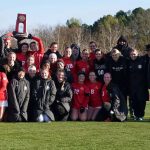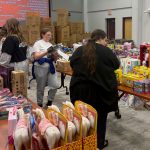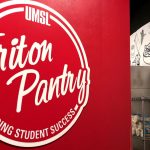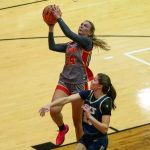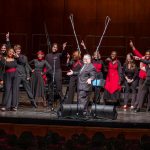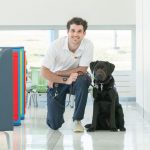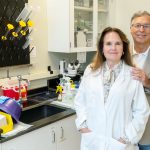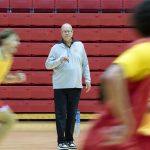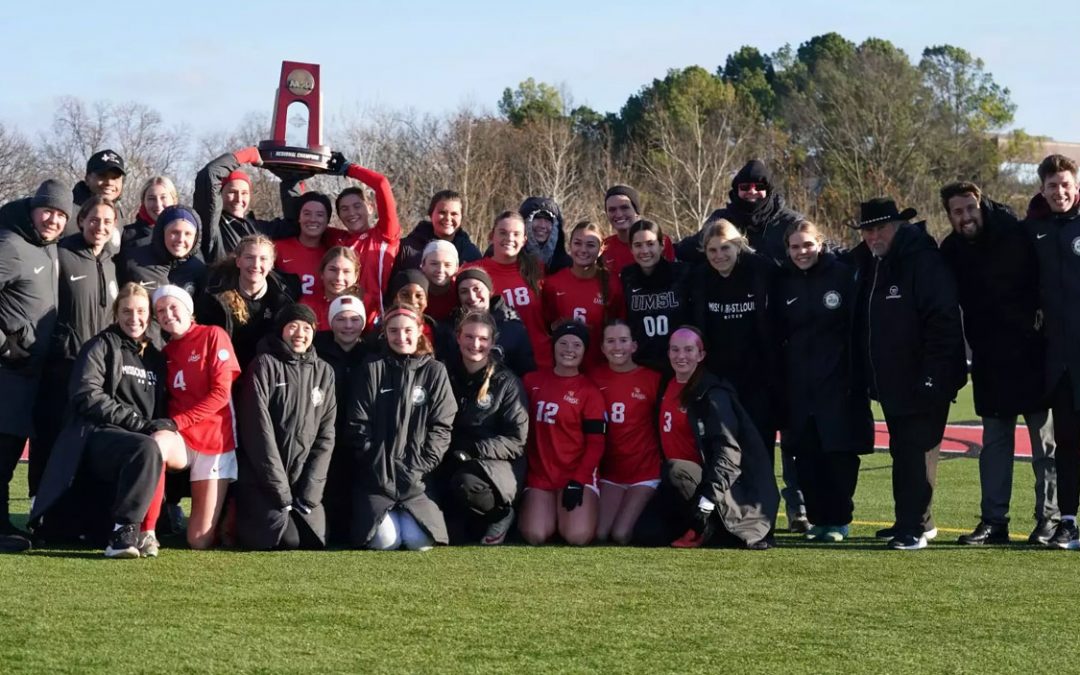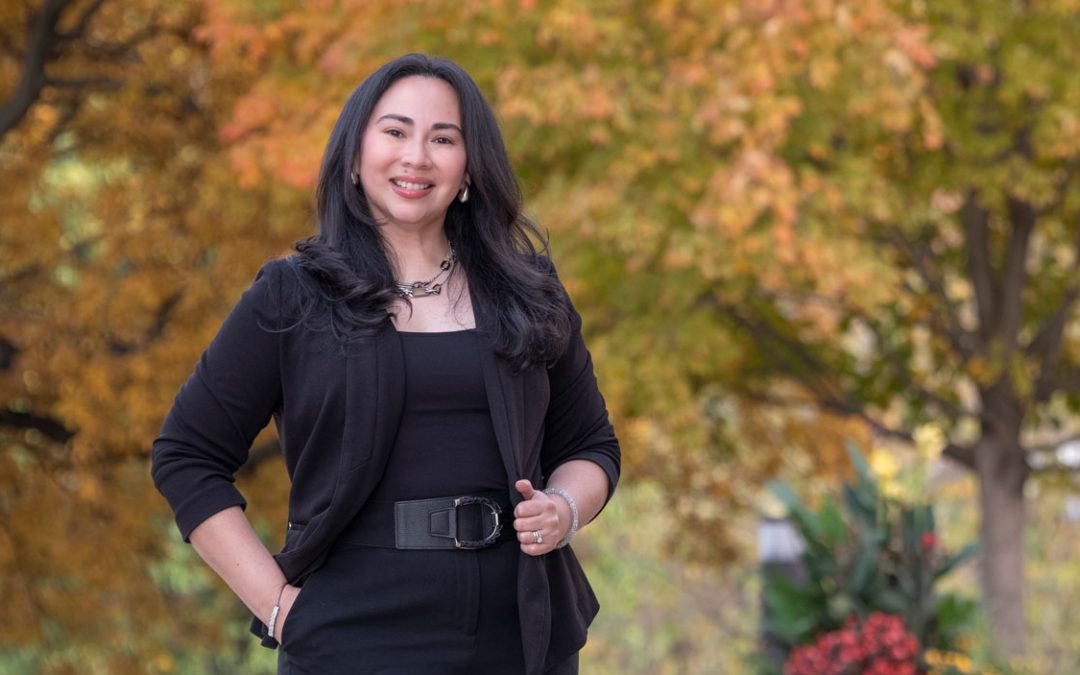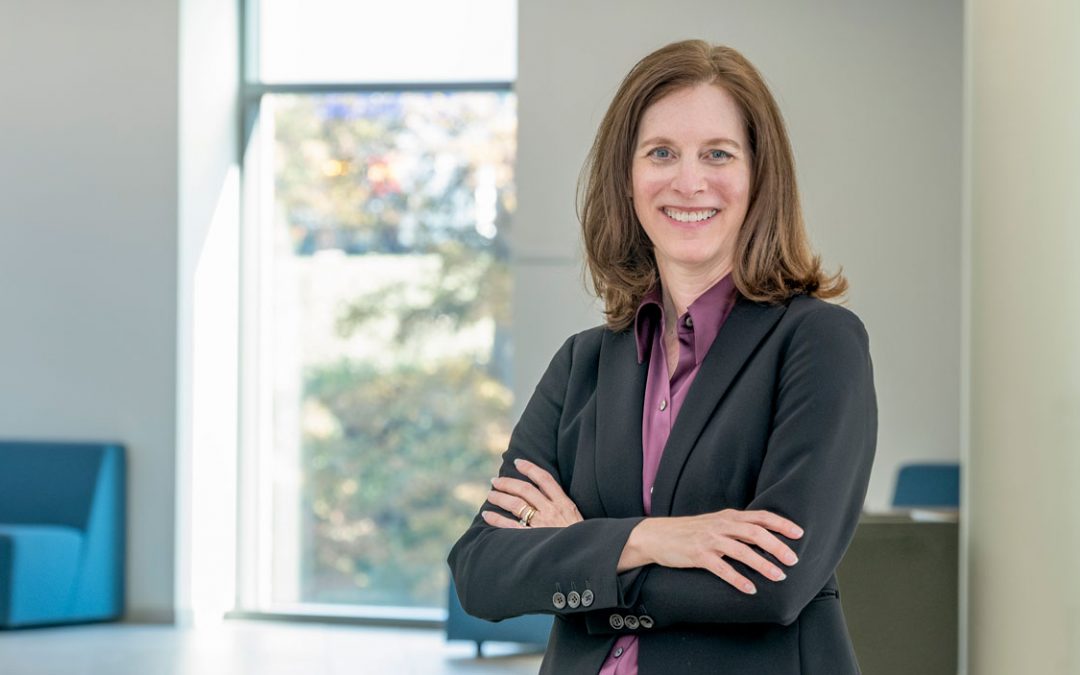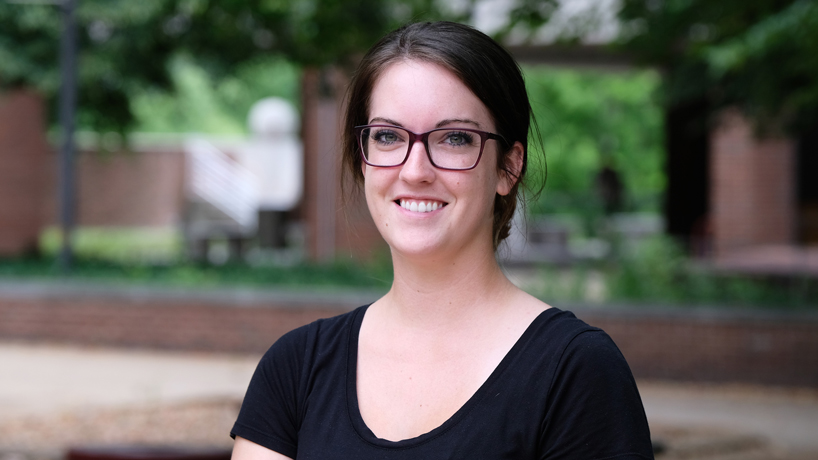
Marissa Sexton was one of seven students honored during the SOURCE Awards presentation in May. She learned of her honorable mention prize during LIGHTFAIR International in Philadelphia. (Photo by August Jennewein)
As a full-time consultant and electrical engineering student, boredom isn’t a typical state for Marissa Sexton. In fact, she finds herself “just tired all the time.”
On the rare occasion when she had a limited workload during winter break, the senior in the University of Missouri–St. Louis and the Washington University Joint Engineering Program sought out ways to challenge herself and broaden her skill set.
The self-assigned busywork paid off, as Sexton earned an honorable mention prize from the 40th annual SOURCE Awards for her conceptual lighting design of a health-care facility.
She received the recognition and crystal trophy during a presentation on May 8 at LIGHTFAIR International in Philadelphia. The SOURCE Awards judge conceptual designs that utilize lighting and controls from the product line of Eaton, a power management company.
Sexton’s submission – “Healing Light: Improving lives and bottom lines with LumaWATT Pro” – focused on daylight harvesting to cut costs for the facility and decrease patient stay durations. Energy efficiency and patient and staff satisfaction were prime considerations when utilizing lighting controls and daylight, specifically in the patient rooms, lobby and rehab gym.
An electrical designer for Ross & Baruzzini, Sexton has spent significant time studying the impact of lighting in the domestic health-care market.
“Prior to finding the competition, I was researching the way light affects patients because there is all of this new technology coming out,” Sexton said. “We’re in a day in age where we can change color temperatures of fixtures, remotely control lighting and integrate daylighting into our designs. All of this can be incorporated into design for improved patient satisfaction and health. That’s how I came up with the idea for ‘Healing Light.’”
She hopes implementing towering windows to allow for ambient light will impact patients by increasing protein metabolism, decreasing fatigue, stimulating white blood cells production and decreasing blood pressure. Sexton also accounted for patient access to lighting control, adding a level of comfort and personalization to the space.
The SOURCE Awards offered six professional and seven student accolades. Judging criteria included the blending of aesthetics, creative achievement, technical performance and the degree to which the lighting met project constraints and design concept goals.
While many student entries are the capstone project of a semester-long course, Sexton’s design was an independent venture.
“I was shocked that I had won because I’m not very artistic,” Sexton said. “I was surprised because it was extremely methodical without a lot of flair. They did say the driving factor behind my award was my knowledge of the controls and the codes, which I got experience with as an intern.”
Graphic representation may have been a struggle initially, but Sexton is now the go-to consultant in her office for the lighting software “Visual.”
“Dealing with Visual software while I was doing this project definitely gave me a leg up,” Sexton said. “I’ve always been pretty good at it, but I never dove deep down to see what I can actually do.”
Following her anticipated graduation in December, Sexton plans to continue her work with Ross & Baruzzini. Although her immediate career path is set, the road wasn’t always so clear.
Originally a mechanical engineering major, Sexton dropped out of the program after realizing it wasn’t her forte. At the time, she contemplated a transfer in schools but stayed after an adviser’s suggestion to try a couple courses in electrical engineering.
While still unsure where the switch would lead her, Sexton landed an internship at Ross & Baruzzini, which resulted in a full-time offer. The transition also introduced her to a beneficial course taught by Thomas Collins. The adjunct professor of electrical engineering had a way of blending both theory and practical application that resonated with students.
“We actually looked at spec sheets,” Sexton said. “If I hadn’t had an internship, I never would have seen a spec sheet until Professor Collins’ class. He really tries to tie everything together.”



